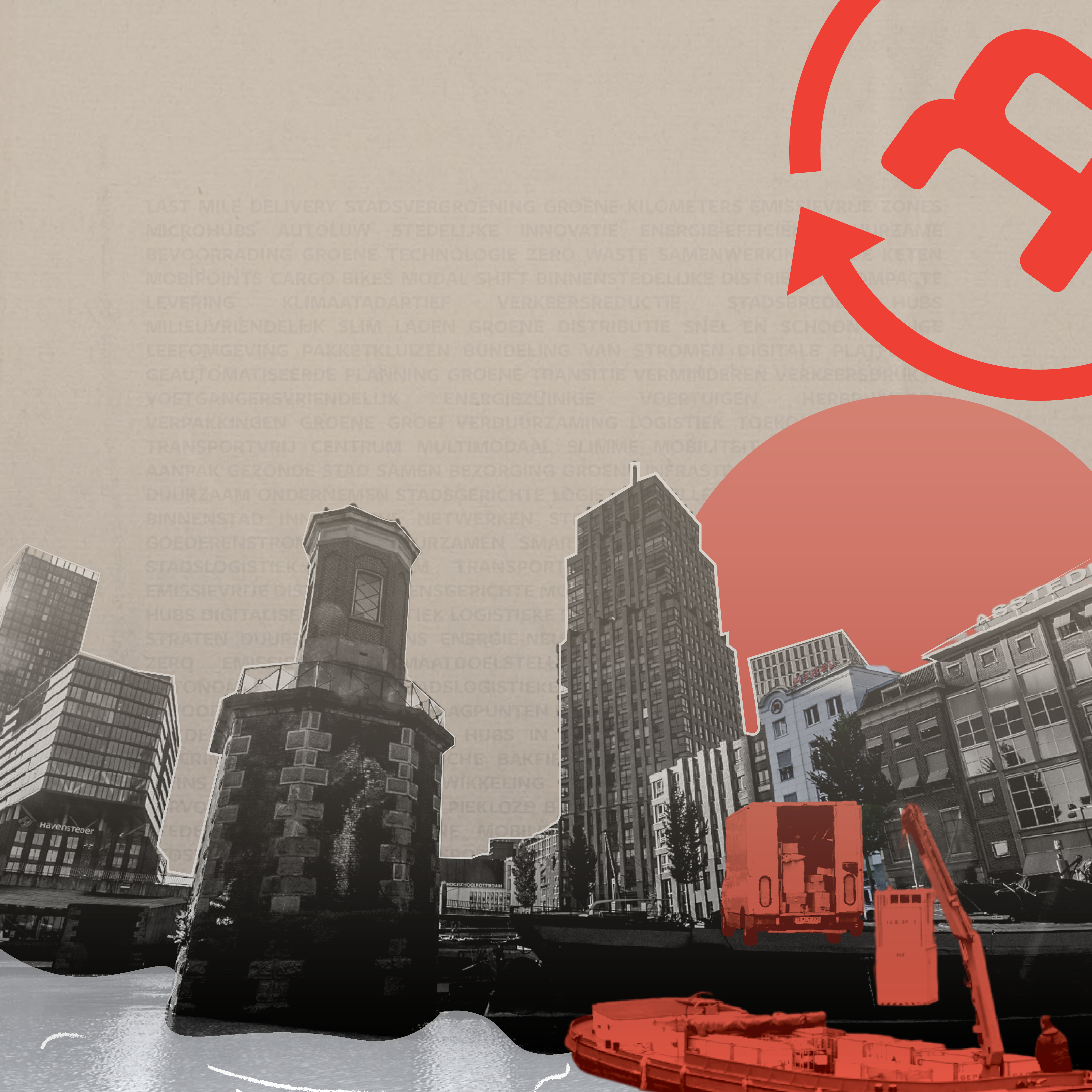Key learnings from the webinar ‘Toekomstbestendige Stedelijke Logistiek’
On Tuesday, November 4, experts in city logistics joined a discussion hosted by Rebels Cathelijne Hermans and Laura Tavernier on the importance and necessity of the Sustainable Urban Logistics Plan (SULP). A SULP (Sustainable Urban Logistics Plan) is vital because it provides a strategic, long-term framework that aligns delivery efficiency with the city’s goals of liveability, environmental health, and stakeholder collaboration. Using research and real-world examples from Eindhoven and Antwerp, experts shared the lessons they’ve learned about how to approach and implement such a plan.
Here are some of the key insights:
Collaboration is key
To make sustainable urban logistics work, collaboration among stakeholders—from municipalities, a consumer ordering a package, to the transportation sector—is essential. Businesses in citylogistics want to know where they stand. They require commitment, continuity, and predictability from local government, said Susanne Balm, project leader and researcher at HvA City Logistics, during the webinar. A SULP helps by providing a clear framework.
Research shows that experiments in urban planning can contribute to long-term change, but only when it’s structured and through co-creation between different parties (such as policy departments, aldermen) who share the lessons learned. Moreover, there needs to be a connection between various government objectives and those of other stakeholders, touching elements such as livability, the economy and mobility.
Anton Renard, mobility advisor for the City of Antwerp, agrees that collaboration is crucial. Together with Rebel, the city did preliminary research into a SULP. Antwerp maintains partnerships with the transportation sector and issues so-called ‘Projectoproepen’. Logistical companies can receive both financial support and advice to develop solutions. Collaborating with sectors ranging from hospitality to supermarkets helps to bring the needs of different stakeholders in line, Renard explains. In doing so, stakeholders find common ground “for a sustainable model that benefits both sides.”
A SULP is a starting point, not a destination
“When cities want to start developing a SULP, their first question is often: what exactly are we talking about? We have very little data on logistics,” says Laura Tavernier of Rebel. To address this, Rebel designed several tools, including the digital platform city logistics, a calculation tool that helps estimate what the logistics flows in a given city look like. The tool is based on freight movements to homes, supermarkets, hospitality venues, and offices—each with its own delivery profile. The data – from studies, interviews, and surveys – are particularly useful in the early phases of a SULP, however you can also reason from strategic goals when data is lacking, Tavernier explained.
A SULP will always be based on several core principles, says Tavernier, such as traffic safety, current municipal policy, and existing goods flows, although part of the process will always have to be suited to the local political context. However, a lack of data should not be a barrier for municipalities. “A SULP is not a finished product but a starting point—you’ll quickly arrive at a concrete list of actions.” That doesn’t necessarily need to come from the department writing the SULP; it could just as well come from the departments for mobility, climate, spatial planning, or the economy.
Balm advises following a flexible process and implementing the policy step by step. After all, redesigning public space is complex and involves many stakeholders, including the local community. A pilot project using water transport at the Appeltjesmarkt in Amsterdam, where a potential neighborhood logistics hub on the waterfront is being explored, is a good example.
‘Werksessies’ or workshops with the logistics sector give transport companies the opportunity to express frustrations and co-create solutions with other stakeholders, Tavernier added. This helps build support. The logistics sector knows that major changes are coming, so it prefers a clear plan over ad hoc policies with unexpected restrictions.
Nout Ramaekers, sustainable mobility advisor for the municipality of Eindhoven, received criticism during a stakeholder session that certain municipal policies were not working at all in practice. “Engage in the conversation,” says Ramaekers. The plan is a starting point; some goals may turn out to be too optimistic or even unachievable. Mistakes are inevitable in discovering what does work. “You may not always understand each other, but you do understand each other’s reasoning.”
A SULP isn’t just restrictive, it also makes space for city logistics
The City of Eindhoven is experiencing densification due to housing construction driven by population growth. The increase in city logistics isn’t just temporary but permanent—it will grow as the number of shoppers and online consumers grows. In addition, ASML and other companies continue to expand. “It means we have to smart in using every square meter have left,” says Ramaekers.
The Eindhoven master plan for logistics, which Ramaekers helped write can, like other measures, be restrictive for the logistical sector. But the plan is also designed to ensure that the city remains serviceable. If nothing changes, the impact on the city’s quality of life and economy—and therefore also on logistics itself—will be worse.
Tavernier of Rebel emphasizes: “We want to help cities understand that logistics can actually be a lever for a sustainable city and are not just a negative byproduct of supplying shops and homes.” For a circular economy, many products must go back into the logistics chain, like reusable packaging and repairable devices. “So the better the logistics system is organized,” Tavernier added, “the better it can support other trends that are part of a livable city of the future.”
